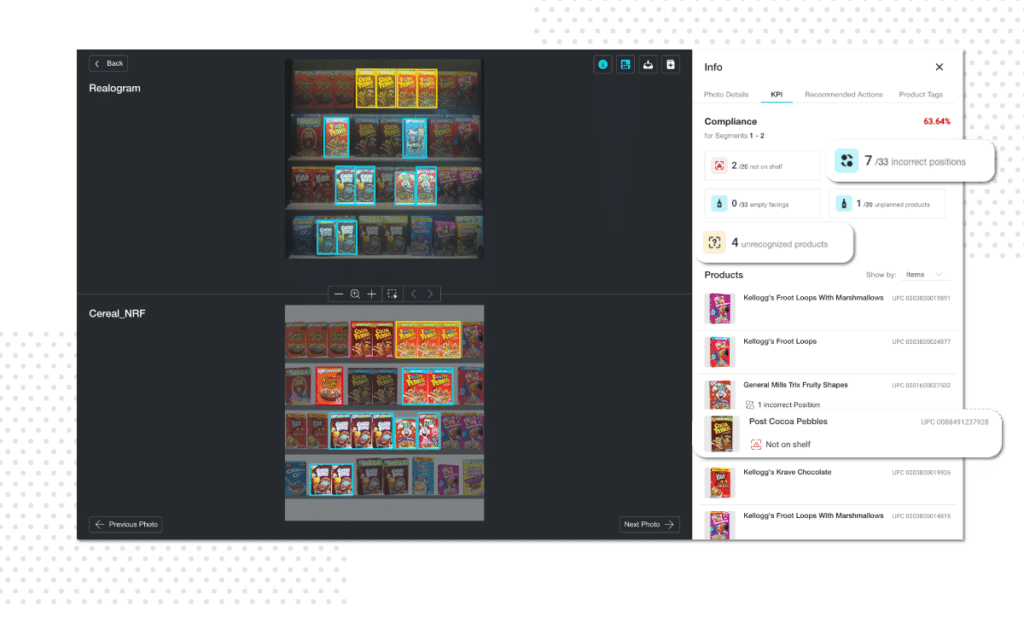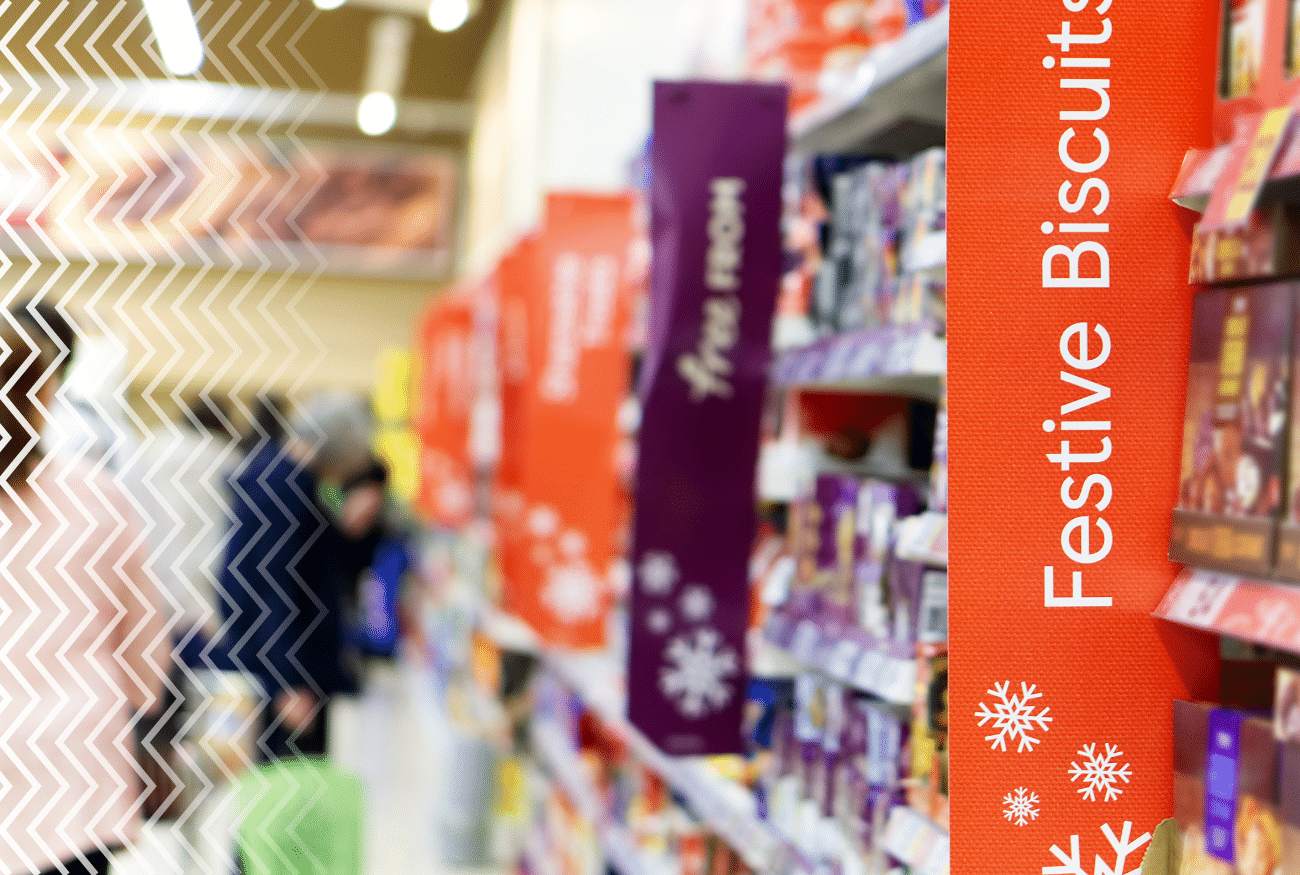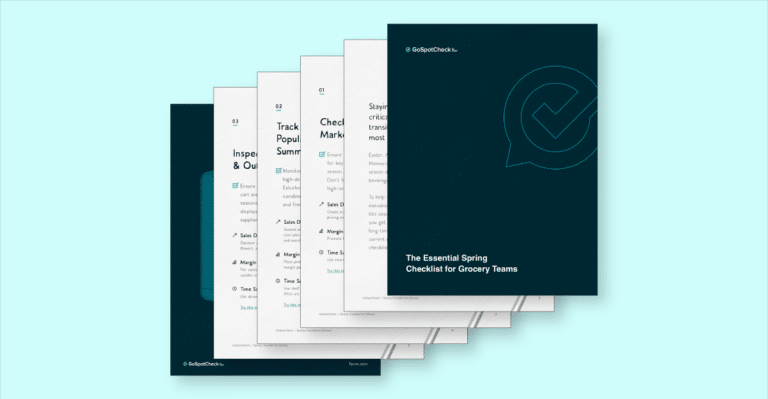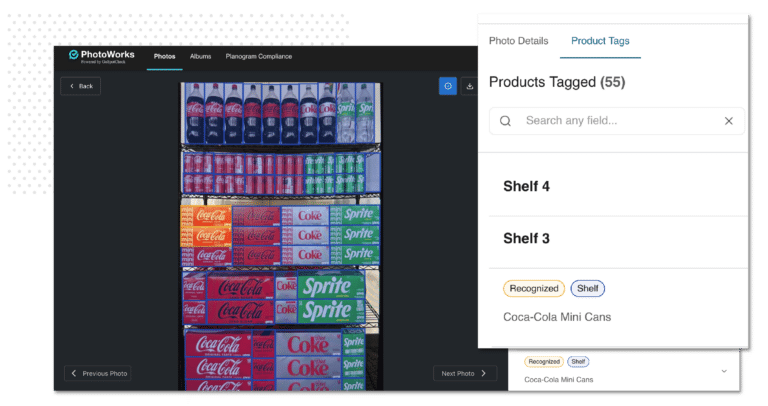5 Strategies to Pursue Growth in Grocery this Season
After a year of heightened food inflation, grocery prices are finally beginning to stabilize— just in time for the holidays. While this is great news for shoppers everywhere, it will put year-over-year sales comps at risk for grocers. With prices on commodity items lowering, grocers need to have a clear focus on basket-building tactics to protect comps through the end of the calendar year.
According to the National Retail Federation, November and December account for about 20% of annual retail sales in the U.S., with grocery figures often surpassing this due to large, at-home celebrations and gatherings. Grocers know that shoppers will be willing to spend more for themselves, their friends, and their families to make the holidays special. So, what can grocers do to win more share of wallet in the final months of the year? This season is about building the basket—encouraging shoppers to add to their list, pick up unplanned items, and ultimately drive incremental sales.
Here are five effective strategies your team can implement to increase sales and basket size as you prepare for a successful holiday merchandising season.

Around 80% of grocery shoppers follow a list, but impulse buys—those unplanned items—still account for up to 62% of supermarket sales. In certain categories, impulse buys can even be responsible for up to 80% of total sales. During the holiday season, when one-third of shoppers admit to being even more prone to impulse buys, strategic cross-merchandising can encourage these last-minute additions and help boost overall sales.
Try these tips to create cross-merchandising displays that inspire shoppers to venture off their lists and into new finds.
Trading Up
During the holidays, shoppers want to treat themselves and their families, so they are more willing to “trade up” to premium options. Even though food prices may still be top of mind for many, shoppers tend to indulge in higher-quality products—think premium meats, cheeses, breads, and desserts. Grocers can leverage this mindset by pairing higher-tier (and more expensive) products with items shoppers already plan to buy, especially when combining items from different departments. Some examples could be:
- Merchandising fresh Parmigiano Reggiano on produce tables or jumper shelves on pasta sauce endcaps.
- Hanging clip strips of ambient-temperature herbs on stuffing mix sets
- Pairing case stacks of high-end nuts and almonds near fresh green beans
Strategic merchandising of higher-end items can boost both the average item price and the number of items per basket, helping shoppers create an exceptional holiday culinary experience.
Pair Emerging Brands with Old Favorites
Certain seasonal staples—like canned pumpkin, turkey, soda, dinner rolls, and frozen desserts—tend to result in brand loyalties for many consumers. Since shoppers often return to these familiar products each year (whether they realize it or not), it can be tough to launch new brands. However, cross-merchandising with already beloved brands can help introduce new and emerging products as perfect complements to these holiday essentials. Here are a few ideas:
- Featuring a new, non-dairy whipped cream next to the traditional canned pumpkin brand
- Displaying vegan marshmallows by the sweet potatoes
- Showcasing probiotic sodas or non-alcoholic beer options alongside classic soda brands
This approach lets customers discover fresh brands that complement their old favorites, potentially creating new loyalties that last beyond the holidays.
Don't Forget the Drinks
Depending on state liquor laws, alcoholic beverages present a prime cross-merchandising opportunity. Up to 40% of annual alcohol sales occur in the final three months of the year, with a significant portion driven by higher-tier SKUs. Nearly 40% of shoppers are more inclined to splurge on premium or luxury alcohol options during the holidays, often adding items they wouldn’t typically purchase, such as champagne or sparkling wine.
Here are a few ideas for cross-merchandising alcohol to capitalize on these behaviors:
- Twin-line traditional red wine and non-alcoholic red wine on meat counters
- Boost items per basket by merchandising a variety of sparkling wines in smaller pack sizes on dessert tables
- Be strategic with flavor pairings—merchandise seasonal chocolate-flavored beers alongside premium chocolate bars, or nutty-profile beers with gourmet nuts.
- Make it easy for shoppers to plan the perfect party by cross-merchandising beer or wine with party supplies like paper plates, cups, and napkins.
By placing these items near complementary products, grocers can make it easy for shoppers to imagine the perfect holiday meal and add these festive choices to their carts.

With only about 29% of customers identifying as loyal shoppers, many consumers visit multiple grocery stores throughout the holiday season. To capture the most sales, it’s crucial for stores to strategically focus on “basket-driving” categories that encourage shoppers to complete more of their holiday purchases in one place.
Capitalize on Center-of-Plate Items
- During the holidays, center-of-plate purchases like meat and seafood tend to increase as shoppers look to make special meals. These categories are typically associated with larger basket sizes and higher total sales.
- When shoppers pick up main course items—like turkey, steak, or seafood—at your store, they’re likely to purchase the rest of their ingredients there too. Promoting these high-value items through targeted marketing or in-store promotions can encourage customers to complete their entire holiday shopping list at your store, boosting basket size and overall sales.
Anticipate Shopper Behavior
Shoppers value convenience, with 89% expressing a preference for grocery stores that make the buying experience easier and more efficient.
For example, when customers buy fresh herbs or spices, they’re usually cooking a recipe that requires additional ingredients. Placing popular holiday items on sale—like fresh rosemary, sage, or cinnamon—can help drive these purchases, as customers are likely to pick up the rest of their needed ingredients along with the discounted ones.
Additionally, strategic cross-merchandising can help increase basket size by grouping must-have items together. For instance:
- Positioning holiday-themed sprinkles and icing next to general baking supplies
- Placing marinades and spices next to meat cuts
This approach makes it easy for shoppers to grab everything they need, encouraging them to add more items to their carts and enhancing the shopping experience.

Planogram compliance is crucial to a store’s success, especially during the high-traffic holiday season. Planograms are intentionally designed to maximize product visibility and sales velocity, so failing to stay compliant means missing out on the strategy behind these layouts. To stay in compliance, consider the following tips:
Leverage Planogram Software
Tools like GoSpotCheck make it easy for retail teams to maintain compliance by providing real-time, SKU-level insights into how every shelf and display set aligns with the planogram. This visibility helps stores quickly identify and correct any discrepancies, keeping shelves stocked and products positioned for maximum impact.

Don’t Overlook Flex Space
Flex space is a valuable asset, especially during the holidays. Use it to feature seasonal or regional products that can attract last-minute purchases or inspire shoppers to trade up to premium options. Incorporating flex space into your planograms allows for greater adaptability while maintaining the overall store layout strategy.
By prioritizing planogram compliance and making smart use of flex space, stores can maximize the effectiveness of their displays, ultimately increasing overall basket size.

During the holiday season, product availability ranks as the top priority for 70% of shoppers. Even outside of peak periods, out-of-stock items are the main reason shoppers will switch stores. With stockouts resulting in a nearly 6% industry average loss of sales, stores can miss out on millions of dollars in potential revenue.
Monitoring shelves and displays in real-time is essential to reducing stockouts—provided that items are available in the stockroom. During the holidays, it’s not uncommon for high-demand, seasonal items to be unavailable due to supply chain issues. In these cases, it’s crucial to keep teams updated on available products and ensure planograms reflect any adjustments.
With GoSpotCheck’s Pic&Plan AI, retail leaders can easily generate and distribute updated planograms, allowing for quick adjustments when inventory changes. This agility keeps displays fresh and aligned with current stock, minimizing the impact of stockouts and improving customer satisfaction.

Today’s grocery shoppers not only expect good customer service, but they also appreciate personalized recommendations. In fact, tailored suggestions can increase basket size by up to 5%. During the holiday season, however, stores often have sales goals tied to specific products, which may not always resonate with team members or feel natural to promote. Rather than focusing solely on upselling specific items, consider a different approach—empower your team to sell products they’re genuinely excited about.
Survey Team Interests
Start by asking floor team members which seasonal products they’re most interested in or enthusiastic about. Use these insights to build product training around items that team members are naturally drawn to.
When employees feel a personal connection to the products they’re recommending, it’s easier—and more enjoyable—for them to talk about and sell these items. This approach can make interactions feel more authentic and encourages shoppers to add these recommended products to their baskets.
By aligning product goals with team interests, you’ll create a more engaging shopping experience that naturally drives sales.
Make the Most of Merchandising This Holiday Season
As the holiday season approaches, grocers have an incredible opportunity to boost sales by implementing strategies that drive larger basket sizes and enhance the shopping experience. From prioritizing planogram compliance and ensuring product availability to strategically cross-merchandising items, these tactics will help keep shelves stocked, shoppers satisfied, and sales growing. However, successfully executing these strategies requires real-time insights and efficient team coordination.
GoSpotCheck by FORM’s powerful AI solution makes it easy for retail teams to stay on top of planogram compliance, stock levels, and seasonal merchandising needs. With GoSpotCheck, your team can quickly adapt displays and keep pace with the busiest shopping season of the year. To see how GoSpotCheck can help your team maximize holiday sales, learn more about our solutions today.




